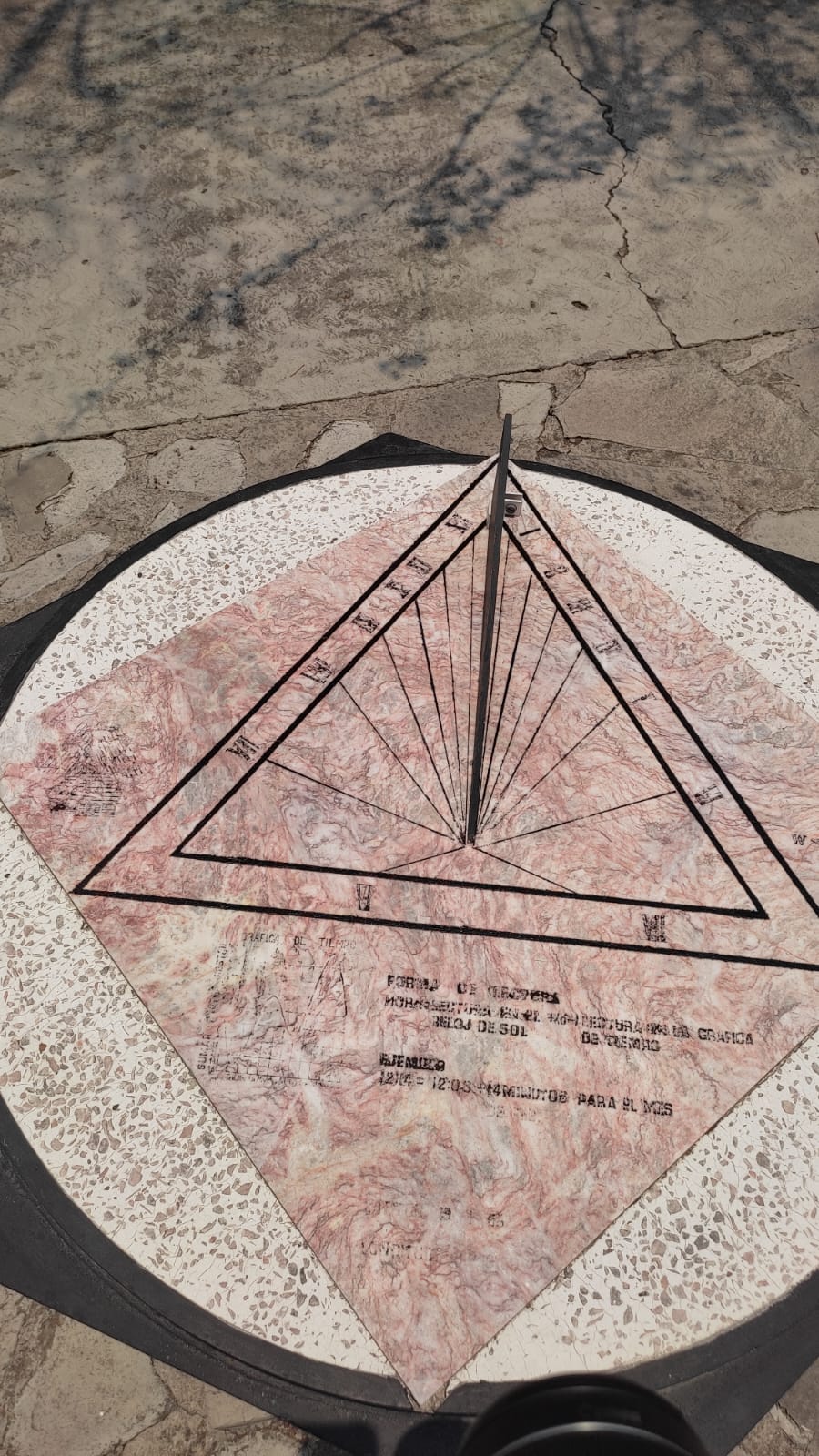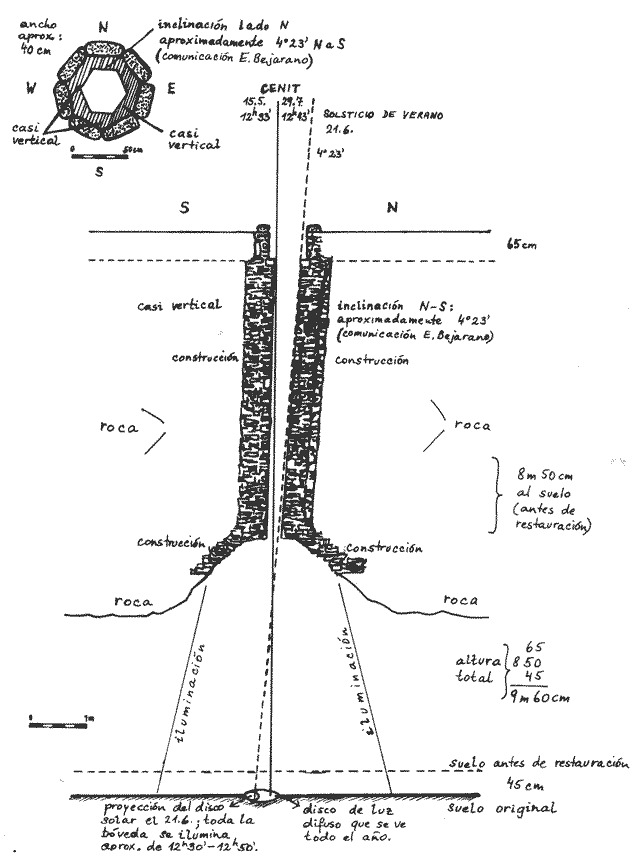The zenith Sun in Tonantzintla. A day without shadow?
A very interesting astronomical phenomenon was observed INAOE, we are referring to the zenith transit of the Sun, which occurs when our star passes through the zenith of the observer; that is, by the highest point in the sky. This phenomenon occurs, for the latitudes located between the tropics of Cancer and Capricorn, only twice a year, when the declination of the Sun (astronomic coordinate that indicates the angular distance between a star and the celestial equator) is equal to the geographical latitude of the observer. During zenith passages, the Sun does not cast any lateral shadow.
The ecliptic, which represents the apparent change in the Sun's position on the celestial sphere over the course of a year, is inclined at an angle of 23.4 degrees with respect to the celestial equator. This means that the Sun's declination values vary between +23.4 and -23.4 in a year. These values coincide with the latitudes of the Tropics of Cancer and Capricorn, respectively. This means that for locations on the Earth's surface that are north of the Tropic of Cancer and south of the Tropic of Capricorn, the Sun's zenith passage does not occur. At the equator, the equinox days occur and on the In the tropics, the zenith sun occurs only once a year, on the day of the summer solstice for each hemisphere.

For the population of Santa María Tonantzintla, the zenith passage took place on May 15, at 12:29 local time. The second zenith passage of the Sun will occur on July 27. This astronomical event was observed in the INAOE solar telescope, by Dr. David Iturbe and his group of students. It was also verified in the horizontal sundial that is located in front of the “Enrique Chavira” building, where it is observed that during the zenith passage, the gnomon of the clock does not produce a shadow on its horizontal plane.
The zenith passage of the Sun was an extremely important astronomical event in Mesoamerica, because, among other things, it was used to synchronize civil and ritual calendars. In several archaeological zones of the country there are zenith observatories that were used to verify the occurrence of this astronomical event.
One of the most notable examples is the zenith observatory located in the “Cueva de los Amates” or “Gruta del Sol”, in Xochicalco, Morelos. The observatory is a hexagonal duct, carved into the ceiling of a cave that allows the Sun's rays to enter the interior of the cave during a certain time of the year. The first entry of the Sun into the zenith tube occurs on April 29, 52 days later the summer solstice takes place; while the last entry occurs on August 13, 52 days after the summer solstice. From this day on, the period of invisibility of the solar disk in the Cueva de los Amates begins, which lasts 260 days, the duration of the pre-Hispanic ritual calendar. Furthermore, 52 is a very important number in the Mesoamerican calendar, because 52 periods of 365 days (the duration of the solar calendar) are equivalent to 73 periods of 260 days. In pre-Hispanic times, a day had its name in the ritual calendar (13 groups of 20 days) and in the solar calendar (18 groups of 20 days + 5 ominous days). In a period of 18,980 days (52x365=73x260) the names of a day in both calendars coincided again. The zenithal entry of sunlight into the Cueva de los Amates takes place on May 15 and July 29.

Taken from Johana Broda, 1982. Modern Astronomy and History of Science. III. Archaeoastronomy and development of sciences in Pre-Hispanic Mexico.
Luis Enrique Erro # 1, Tonantzintla, Puebla, México, Código Postal 72840, Tel: (222) 266.31.00, difusion@inaoep.mx
This work is licensed under a Creative Commons Attribution-NonCommercial-NoDerivs 2.5 Mexico License.


